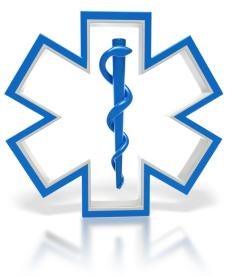The U.S. Department of Health and Human Services (“HHS”) recently released a final rule titled “Patient Protection and Affordable Care Act; HHS Notice of Benefit and Payment Parameters for 2017” (“Final Rule”)[1] that sets policies and regulatory standards for health insurance exchanges and qualified health plan (“QHP”) offerings for the 2017 plan year. The Final Rule includes HHS’s policy to limit surprise bills for out-of-network services.
Under the Final Rule, certain QHP enrollees’ cost-sharing amounts for essential health benefit (“EHB”) services provided by out-of-network providers in an in-network setting will count toward an enrollee’s in-network annual limitation on cost sharing. However, this requirement (i) will not apply if the QHP gives appropriate notice to the enrollee, (ii) is slated to take effect in the 2018 benefit year but may see further modifications before then, and (iii) is not intended to preempt any state laws on this issue.
HHS requires each QHP that uses a provider network to count the cost sharing charged to an enrollee for an EHB delivered by an out-of-network ancillary provider (such as anesthesiology or radiology services) at an in-network facility toward that enrollee’s annual in-network cost sharing limit.
For providing notice to the enrollee that an out-of-network provider may be supplying services that could lead to additional costs, HHS is applying a timeframe of the longer of:
-
the issuer’s “prior authorization timeline” (i.e., when the issuer would typically respond to a timely prior authorization request), or
-
48 hours before the scheduled service.
These conditions apply to QHPs both on and off the Federally Facilitated Marketplace and to QHPs with tiered networks, but they do not apply to QHPs that do not cover out-of-network services.
HHS limited the Final Rule to services delivered by an out-of-network ancillary provider rather than supplied by a primary provider to avoid consumers who had selected an out-of-network provider from deliberately seeking to have services provided at an in-network facility to reduce cost sharing.
Also, HHS is requiring that any notices sent to enrollees by QHPs simply be form notices (versus individualized ones) indicating that additional costs may be incurred for an EHB supplied by an out-of-network ancillary provider in an in-network setting. While HHS is not requiring customized information be offered in such circumstances—including whether an out-of-network ancillary provider is scheduled to perform services, information on available network providers, costs, and how a consumer could appeal a determination—HHS is strongly encouraging QHP issuers to furnish that information.
Stand-alone dental plans must also comply with these requirements as they are obligated to meet all QHP certification standards.
The intent in implementing this policy in 2018 is to afford HHS time to monitor ongoing efforts to address the issue of surprise out-of-network cost sharing and to permit HHS to amend the Final Rule, as necessary, to accommodate progress on this issue.
Many commenters supported this effort to address surprise out-of-pocket costs for consumers, but some asked that states be given the time and discretion to implement their own network adequacy standards. HHS explicitly noted that these policies are not intended to preempt any state laws on this issue, such as those that have been enacted in New York.[2] They also do not apply to emergency services, which are governed by other federal regulations.
It is not clear how the Final Rule will handle the determination of the balance bill amount (that is, the difference between the amount that the enrollee’s QHP will allow and what the provider charges for services). There are also other concerns that the proposal may have unintended consequences, such as disincentivizing providers from contracting with issuers in order to be able to balance bill, or incentivizing consumers and out-of-network providers to elect to perform procedures at in-network facilities.
Notwithstanding those concerns, the Final Rule, along with President Obama’s Budget provision[3] that seeks to eliminate surprise out-of-network health care charges by placing some of the surprise bill burden on hospitals and physicians, shows that surprise bill concerns for consumers are on the minds of legislators at a national level and sets the stage for increased transparency and patient protection.
[1] 81 Fed. Reg. 12204 (March 8, 2016), available here.
[2] See “New York’s ‘Emergency Medical Services and Surprise Bills’ Law” (Oct. 22, 2014), available here.
[3] See Basil Kim and Jackie Selby, Surprise Health Care Bill Protections Addressed in President Obama’s 2017 Budget for Health and Human Services, Health Law Advisor (blog), Feb. 24, 2016, https://www.natlawreview.com/article/surprise-health-care-bill-protections-addressed-president-obama-s-2017-budget-health.




 i
i

